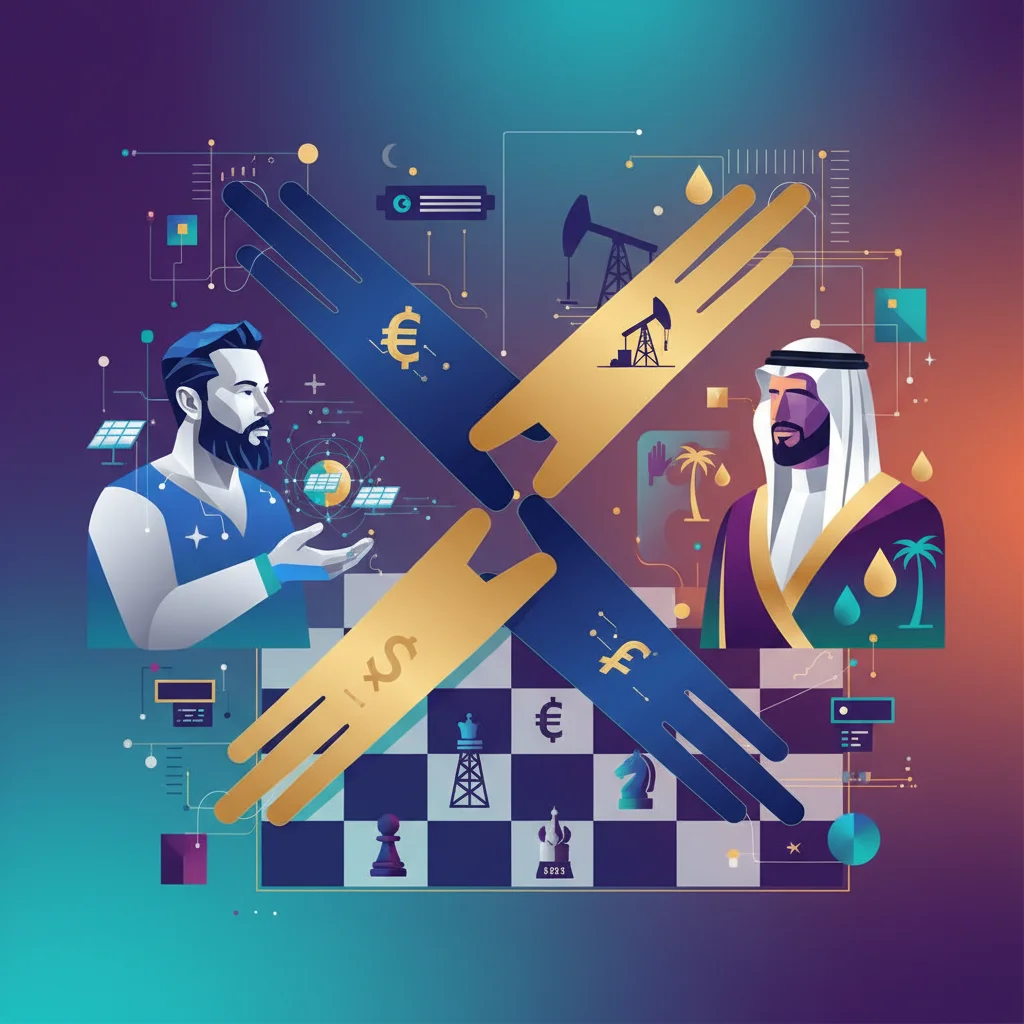
The Billion-Dollar Handshake: Why Musk’s Dinner with the Saudi Crown Prince Was More Than Just a Meal
In the world of high-stakes global politics and finance, a dinner is never just a dinner. It’s a chessboard, a negotiation table, and a theater of influence all rolled into one. When Elon Musk, the visionary and often volatile CEO of Tesla and SpaceX, attended a black-tie White House dinner for Saudi Crown Prince Mohammed bin Salman, it was far more than a simple photo opportunity. It was a powerful signal—a convergence of American technological prowess, Saudi Arabia’s colossal financial ambition, and the transactional diplomacy of the Trump administration. This event, chronicled by the Financial Times, marked a potential turning point in relations and hinted at the deep undercurrents shaping the future of global investing, technology, and economics.
For investors, business leaders, and anyone tracking the pulse of the global economy, understanding the implications of this meeting is crucial. It reveals the intricate dance between Silicon Valley innovators and sovereign wealth funds, a partnership that is increasingly defining the next generation of industrial and technological development. This wasn’t just about Musk’s return to the White House inner circle; it was about the strategic alignment of two of the most disruptive forces on the planet: Musk’s technological empire and Saudi Arabia’s multi-trillion-dollar plan to reinvent itself.
The Strategic Context: A Confluence of Ambition
To appreciate the gravity of this dinner, one must understand the motivations of the key players. On one side, you have Elon Musk, a figure who perpetually operates on the bleeding edge of innovation and requires staggering amounts of capital to fuel his ventures—from colonizing Mars with SpaceX to electrifying global transport with Tesla. His relationship with the Trump administration had been complex; after joining and then publicly leaving two presidential advisory councils, his presence at this high-profile event signaled a significant thaw and a renewed engagement with the corridors of power.
On the other side, you have Crown Prince Mohammed bin Salman (MBS), the architect of Saudi Arabia’s “Vision 2030.” This is arguably one of the most ambitious national transformation projects in modern history. At its core, Vision 2030 is a strategic imperative to diversify the Saudi economy away from its decades-long dependence on oil. The primary vehicle for this transformation is the Public Investment Fund (PIF), Saudi Arabia’s sovereign wealth fund, which has been tasked with deploying hundreds of billions of dollars into high-growth, future-focused sectors around the world. According to the PIF’s official strategy, the fund aims to grow its assets under management to over $2 trillion by 2030, making it the largest of its kind globally.
The meeting, therefore, represents a perfect confluence of needs: Musk needs massive, patient capital, and the PIF needs iconic, transformative technology companies to invest in. It’s a symbiotic relationship that could reshape entire industries.
The 0.001% Solution: Could a Micro-Tax on Every Transaction Fix the Economy?
Decoding the Investment Thesis: Why Musk’s Empire is a Perfect Fit for Vision 2030
For the PIF, an investment in any of Musk’s companies is not merely a financial play; it’s a strategic acquisition of knowledge, branding, and a foothold in the post-carbon economy. The alignment between Musk’s ventures and the pillars of Vision 2030 is remarkably direct.
Here’s a breakdown of the strategic synergies:
| Elon Musk’s Venture | Alignment with Saudi Vision 2030 | Financial & Economic Implications |
|---|---|---|
| Tesla & SolarCity | Promotes renewable energy and a sustainable domestic economy, reducing reliance on oil for domestic consumption and positioning the Kingdom as a leader in green technology. | Direct investment in the EV and solar sectors. Potential for Gigafactories in the Middle East, boosting local manufacturing and job creation. Impacts oil futures and energy trading. |
| SpaceX & Starlink | Supports goals of developing a high-tech, diversified economy. Provides infrastructure for a digitally-enabled society and enhances national prestige and security. | Opens doors for sovereign investment in the burgeoning private space industry. Strategic partnerships could influence the global telecommunications market. |
| The Boring Company & Hyperloop | Directly aligns with the development of futuristic megaprojects like NEOM, a $500 billion smart city. Aims to create world-class, tech-driven infrastructure. | Massive project finance opportunities, moving beyond traditional banking. A successful Hyperloop project would revolutionize logistics and public transport. |
This synergy explains why the PIF would later go on to acquire a nearly 5% stake in Tesla, a move that became famously entangled with Musk’s “funding secured” tweet (source). The interest wasn’t fleeting; it was a calculated move based on a long-term vision. For analysts in the stock market, understanding these sovereign-level interests is becoming as important as analyzing quarterly earnings reports.
This shift has profound implications for global finance. It means that geopolitical relationships are becoming a key driver of tech funding. It also introduces new layers of complexity and risk. What happens when a company’s strategic direction becomes intertwined with a nation’s foreign policy? While the capital is immense, the potential for political entanglement is equally significant. We predict a future where the most ambitious tech projects—from AI to space exploration—will be financed not by traditional banking or IPOs, but by these powerful state-backed funds. This new paradigm of “geopolitical venture capital” will fundamentally alter the landscape of innovation and investing for decades to come.
The Ripple Effect on the Global Economy and Financial Markets
The implications of this burgeoning alliance extend far beyond Riyadh and Silicon Valley. They create ripple effects across the entire global financial ecosystem.
1. A New Paradigm for Tech Investing
The scale of capital that sovereign wealth funds can deploy is orders of magnitude greater than that of most venture capital firms. This allows visionary founders to think bigger and pursue “moonshot” projects without the constant pressure of fundraising rounds. This changes the very nature of startup finance and could accelerate the pace of technological breakthroughs in capital-intensive fields. It also puts pressure on traditional financial centers to adapt to this new competition for high-quality deals.
Beyond the Crown: Deconstructing the £1M Bitcoin Scam of a Fake Royal
2. Geopolitical Realignments
Strong commercial ties, especially in strategic sectors like technology and energy, inevitably lead to stronger diplomatic ties. A deep partnership between a key American industrialist and the Saudi government strengthens the US-Saudi economic axis. For investors, this means monitoring geopolitical developments in the Middle East is no longer just about the price of oil; it’s about the flow of capital into the tech-heavy Nasdaq and the broader stock market.
3. The Future of Financial Technology (Fintech)
As sovereign funds manage more complex, cross-border deals in cutting-edge technology, the demand for sophisticated financial technology will soar. There is a growing need for advanced platforms for due diligence, risk management, and secure, transparent tracking of massive capital flows. While not a direct topic of the dinner, it’s plausible that future sovereign-level transactions could leverage technologies like blockchain to ensure transparency and security, creating new opportunities in the institutional fintech space.
Beyond the Toybox: How the 'Kidult' Economy is Reshaping Investment and Finance
4. Impact on the Energy Sector
Perhaps the most ironic and profound implication is the world’s largest oil-producing nation investing heavily in the very technologies designed to end the era of fossil fuels. This isn’t a contradiction; it’s a hedge. By backing companies like Tesla, Saudi Arabia is ensuring it has a powerful seat at the table in the new energy economy. This strategic pivot has long-term consequences for energy trading, the valuation of traditional energy companies, and the global pace of transition to renewables.
Conclusion: The Dinner as a Blueprint for the Future
The White House dinner attended by Elon Musk and Mohammed bin Salman was a pivotal moment, crystallizing the forces shaping the 21st-century global economy. It was a clear demonstration that the future of large-scale innovation will be funded by new sources of capital, driven by national ambitions as much as by market forces.
For the finance professional, the investor, and the business leader, the key takeaway is that the lines are blurring. Technology is now geopolitics. Sovereign wealth is the new venture capital. A dinner can signal a multi-billion dollar shift in capital allocation. Paying attention to these high-level signals is no longer optional; it’s essential for anyone looking to navigate the complex and interconnected world of modern finance and investing.


